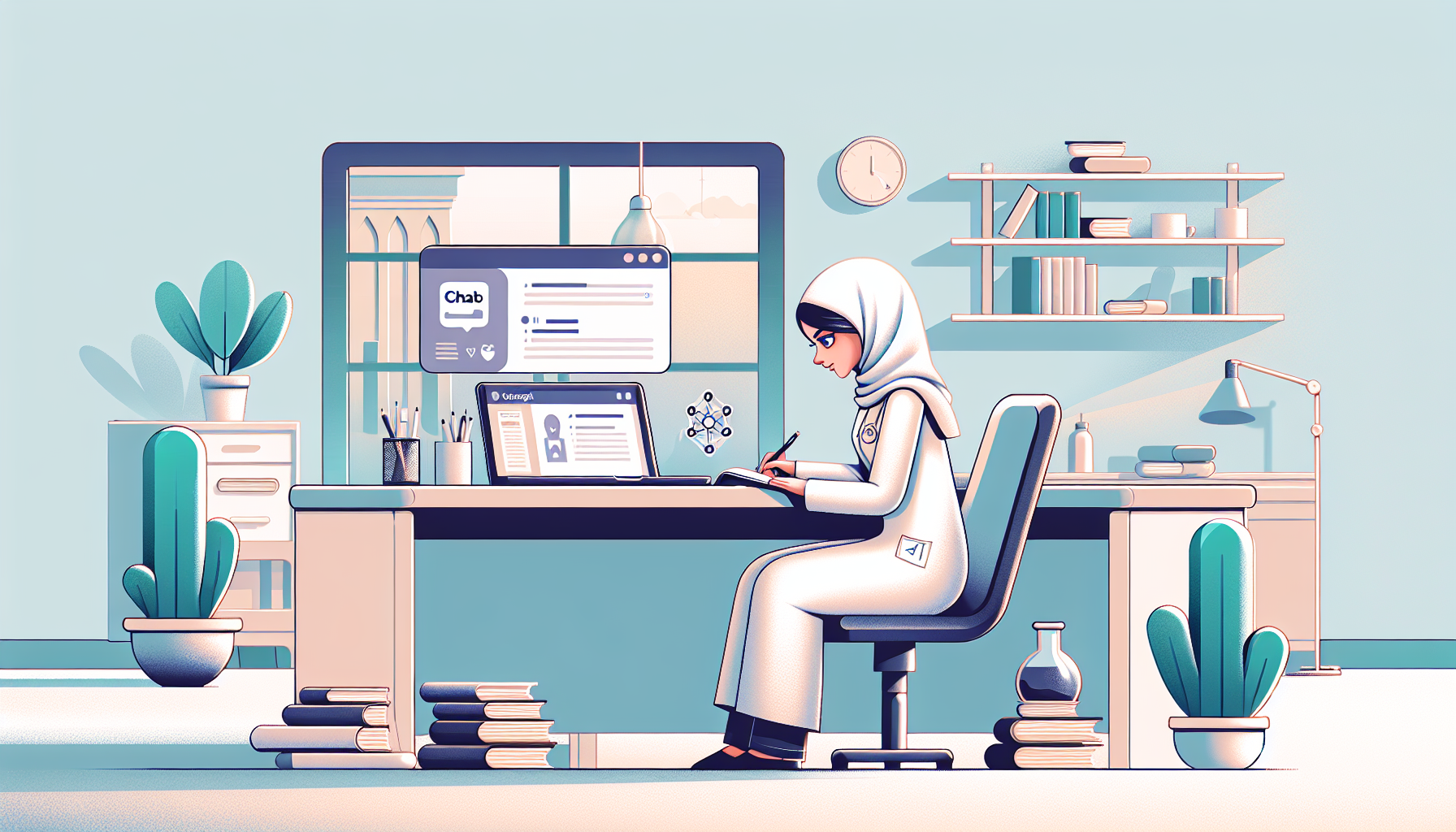Are you feeling stuck when it comes to brainstorming laboratory experiments? You’re not alone! Many people struggle to come up with fresh and engaging ideas for their projects, especially when working under deadlines or strict guidelines. It can be overwhelming, right?
But guess what? If you stick around, I’ll show you how ChatGPT can be your secret lab assistant. From generating experiment ideas to analyzing data, this handy tool has your back in making the lab experience smoother and more creative.
We’ll dive into prompts that can help kickstart your experiments, write compelling reports, and even ensure your safety. Let’s turn that lab struggle into a breeze!
Key Takeaways
- ChatGPT can help generate fresh and engaging laboratory experiment ideas quickly.
- Use specific prompts for targeted results tailored to your field, whether it’s biology, chemistry, or physics.
- It offers guidance on data analysis and interpretation to enhance your understanding of results.
- ChatGPT assists in creating hypotheses, ensuring they are testable and relevant to your research.
- You can structure lab reports effectively with prompt suggestions for each section.
- Utilize ChatGPT to find credible resources and references to support your experiments.
- Optimize your prompts by being specific, clear, and including context for better responses.

Prompts for Laboratory Experiments You Can Use with ChatGPT
If you’re looking for inspiration in your lab work, ChatGPT can be a game-changer. Here are some prompts that will help generate interesting laboratory experiment ideas.
- “List 5 creative laboratory experiments for high school students in biology.”
- “Suggest a list of interactive lab activities for teaching chemistry concepts.”
- “What are some AI-assisted lab experiments that can be conducted with basic equipment?”
- “Generate innovative ideas for experiments related to environmental science.”
- “Provide examples of experimental designs for testing plant growth under different light conditions.”
These prompts will help you unlock fresh ideas for your experiments, making your lab work more engaging and informative.
How to Generate Experiment Ideas Using ChatGPT
Generating experiment ideas with ChatGPT can be straightforward and fun. Follow these actionable steps to get started.
First, define the subject matter. Specify the field, whether it’s biology, chemistry, or physics.
Next, use targeted prompts to encourage creative brainstorming. Here are some effective prompts to copy and paste:
- “Brainstorm 10 science experiment ideas involving renewable energy sources.”
- “Generate a list of innovative lab research questions in microbiology.”
- “Provide unique experiment ideas for studying plant responses to stimuli.”
- “What are some interesting experiments for demonstrating the laws of motion?”
By being specific in your prompts, you’ll get more tailored results that make your experiments both exciting and educational.
Prompts for Analyzing Experimental Data
Once your experiments are complete, analyzing the data can be the most critical step. Here are prompts to help you with that process.
- “Explain how to analyze the experimental data collected in a plant growth study.”
- “What statistical analysis techniques are best for comparing two sets of data?”
- “Outline the steps for drawing conclusions from lab results in a psychology experiment.”
- “Provide prompts for visualizing data findings in a biology experiment.”
- “How do I interpret the results of an experiment comparing different soil types?”
These prompts not only guide your analysis but also help you understand your findings more thoroughly.
Using ChatGPT for Safety Procedures in the Lab
Ensuring safety in the laboratory is paramount. You can use ChatGPT to generate safety procedures tailored to your specific experiments.
Start by asking for established safety guidelines related to your work. Here are some useful prompts:
- “List essential lab safety guidelines for working with hazardous chemicals.”
- “What emergency procedures should be in place during chemistry experiments?”
- “Generate a risk assessment checklist for conducting field studies.”
- “Provide examples of safe laboratory practices for student-led experiments.”
- “What chemical safety protocols should I follow when handling toxic substances?”
These safety prompts can help you stay compliant and ensure a secure working environment.

Creating Hypotheses with ChatGPT
Creating a solid hypothesis is vital for any scientific experiment. ChatGPT can help you formulate effective hypotheses based on your research interests.
To get started, provide context about your experiment when prompting ChatGPT.
- “Generate a hypothesis for an experiment investigating the effects of fertilizer on plant growth.”
- “What is a possible hypothesis for studying the impact of temperature on enzyme activity?”
- “Create a hypothesis related to the relationship between light intensity and photosynthesis rates.”
- “Propose a hypothesis for examining how different soil types affect plant health.”
- “What hypotheses can be made about the effect of pollution on water quality?”
These prompts guide ChatGPT toward generating clear, testable hypotheses that can pave the way for meaningful experiments.
Prompts for Writing Laboratory Reports
Writing a lab report doesn’t have to be a daunting task. You can use ChatGPT to help structure and flesh out your reports effectively.
Start by asking for guidance on specific sections of your report.
- “Outline the key sections of a standard laboratory report.”
- “Help me summarize the results of my experiment on sugar fermentation.”
- “Write an introduction for a lab report on the effects of acid on metals.”
- “Provide tips for presenting data in a laboratory report.”
- “Generate a conclusion for an experiment about heat conduction in different materials.”
Using these prompts can streamline your writing process, ensuring your lab report is organized, comprehensive, and clear.
Finding Useful Resources and References through ChatGPT
When conducting experiments, having access to quality resources and references is crucial. ChatGPT can assist in sourcing valuable information.
Start by asking for specific types of literature or educational materials related to your field.
- “List reputable sources for scientific articles on climate change.”
- “What are some key textbooks in organic chemistry?”
- “Find online resources for microbiology laboratory protocols.”
- “Generate a list of academic journals that publish experimental psychology research.”
- “Provide links to educational videos about the scientific method.”
These prompts can lead you to credible references, making your research process smoother and more effective.
Tips for Optimizing Your ChatGPT Experiment Prompts
If you want better results from ChatGPT, optimizing your prompts is essential. Tailoring your requests can significantly enhance the responses you receive.
Here are some actionable tips for crafting effective prompts:
- Be specific about your subject matter. For instance, instead of asking for general biology experiments, specify any particular aspect you are interested in.
- Use clear, concise language. The clearer your request, the better the output you’ll receive.
- Include context where possible to guide ChatGPT effectively. Mentioning the goal of your experiment can yield more relevant ideas.
- Experiment with different phrasing. If one prompt doesn’t yield great responses, try rephrasing it in several different ways.
- Utilize follow-up questions to refine the information you receive. Engaging in a conversation can help hone in on the specifics you need.
Implementing these strategies can make a noticeable difference in the quality and relevance of your ChatGPT interactions.

Finding Useful Resources and References through ChatGPT
When you’re deep into your experiments, having the right resources can elevate your research.
ChatGPT can help you source credible literature and educational materials to support your work.
To make the most of ChatGPT, consider these prompts that lead you to useful references:
- “List top online databases for scientific research in the field of environmental science.”
- “Find recent studies related to gene editing in reputable journals.”
- “Provide a summary of key textbooks on laboratory safety practices.”
- “Gather academic articles discussing the effects of sleep on cognitive performance.”
- “Show me educational websites that offer tutorials on statistical analysis.”
Using these prompts, you can gather a collection of resources that will strengthen your reports and enhance your experiments.
Tips for Optimizing Your ChatGPT Experiment Prompts
Want to get the best responses from ChatGPT? Optimizing your prompts is key.
Crafting effective prompts can drastically improve the quality of the information you receive.
Here are some straightforward tips to help you get the most out of ChatGPT:
- Be specific about what you need. Instead of asking for lab experiments, mention the specific subject or theme you are focusing on.
- Use clear and concise language in your prompts for clarity.
- Include context whenever possible, such as the goals or limitations of your experiments.
- Don’t hesitate to rephrase your questions if the initial responses aren’t quite right.
- Engage with follow-up questions to dive deeper into a topic.
By implementing these strategies, you can enhance the relevance and utility of the responses from ChatGPT for your lab work.
FAQs
ChatGPT can help brainstorm and refine experiment ideas by generating prompts based on specific scientific topics, objectives, or even previous experiments, providing users with a creative starting point for their research.
ChatGPT can assist in analyzing experimental data by guiding users on statistical methods, providing interpretations, and helping visualize results. It can suggest appropriate tools based on the specific data set type.
Yes, ChatGPT can help draft safety protocols by providing general safety procedures, identifying potential hazards, and suggesting preventive measures based on specific laboratory environments and equipment used.
To optimize prompts, be specific about what you need, include context, and ask direct questions. Providing details can lead to more relevant and useful responses tailored to your laboratory requirements.
